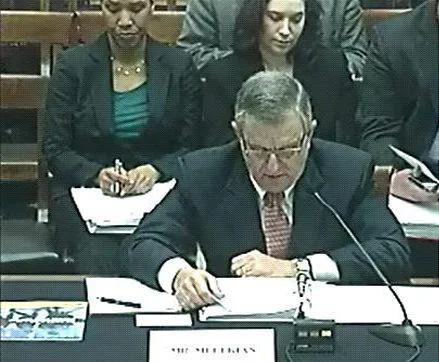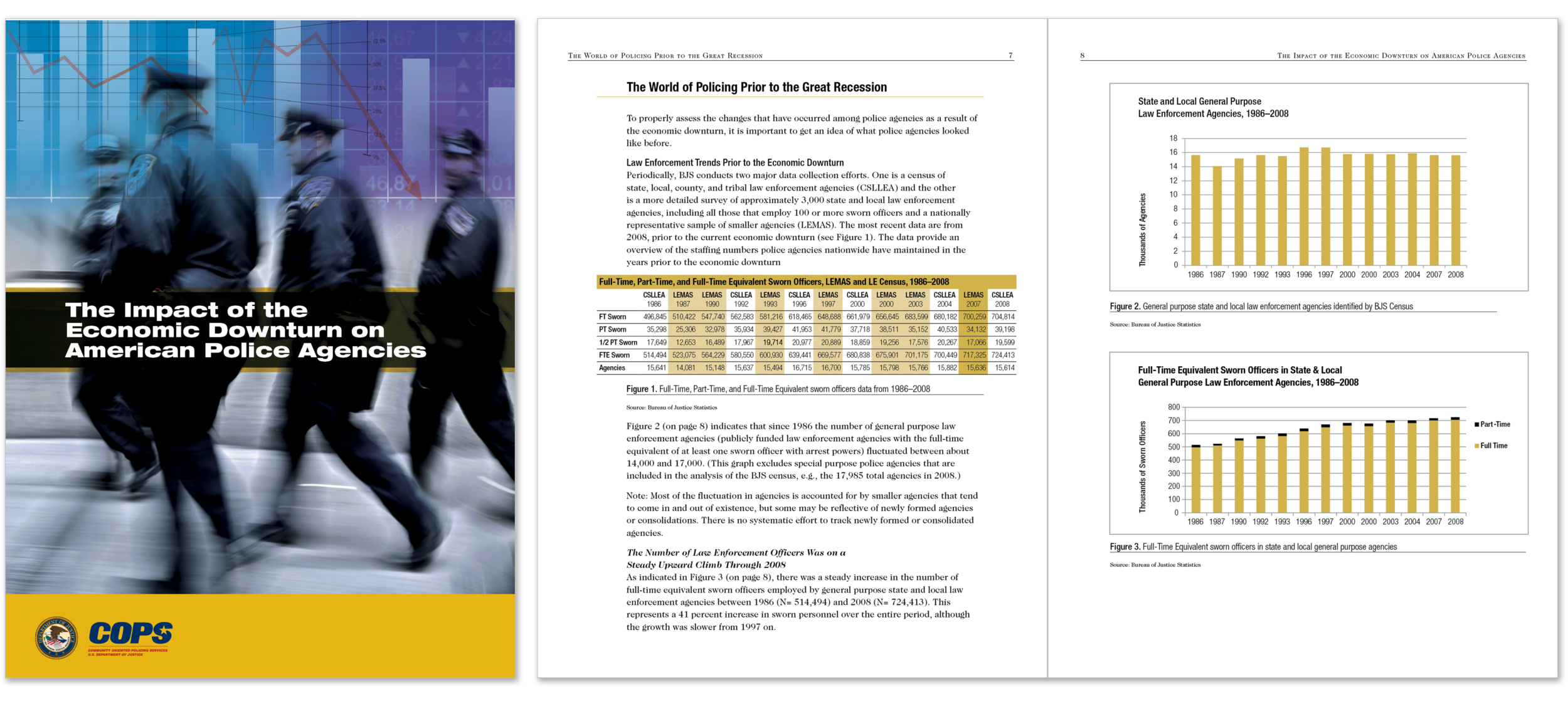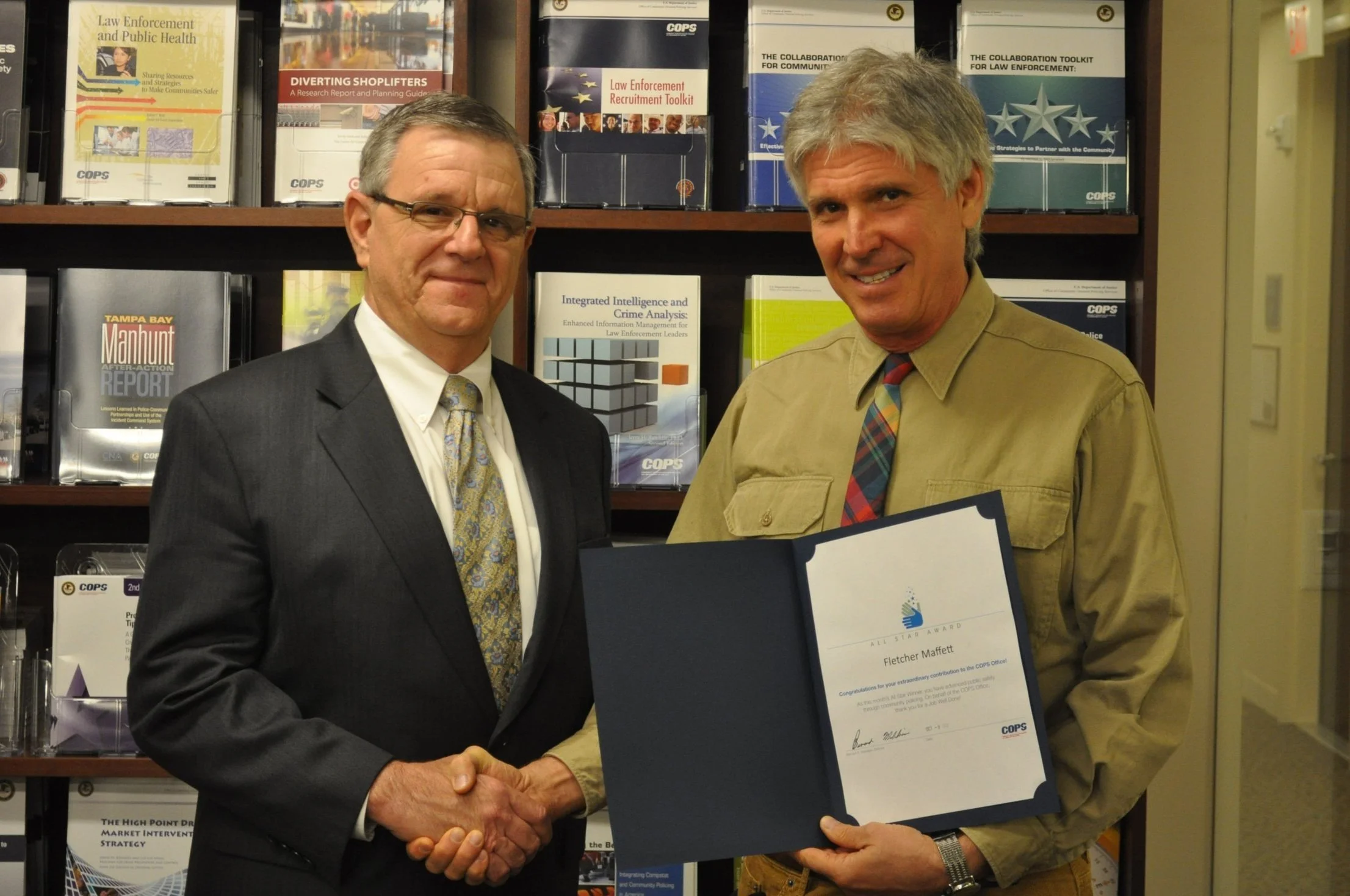June 2011 — December 2013
(On-site Lockheed Martin Civil / Mega 3 Contractor)
UNITED STATES DEPARTMENT OF JUSTICE—EDUCATION & SOCIAL CAUSES AWARENESS | LAW ENFORCEMENT & COMMUNITY RELATIONS | TEAM LEAD FOR PUBLICATIONS DESIGN & ONLINE COMMUNITY OUTREACH PROGRAMS | BRAND DESIGN
CASE STUDY
Publications design for just—and social causes
It was a very different time at the United States Department of Justice—when I worked there.
Between 2000 and 2015, the national conversation around law enforcement was less contentious, before issues of excessive force and systemic inequality dominated public discourse. During this period, the COPS Office was deeply focused on fostering community well-being. We prioritized collaboration, not conflict.
My role at the COPS Office was centered around community impact.
Rather than funding weapons and ammunition, the COPS Office issued grants aimed at bridging divides and tackling critical social issues. These initiatives included:
Veteran Reintegration: Helping veterans transition back into civilian life, leveraging their military training to serve their communities.
Community Engagement: Investing in programs that created positive, lasting change, even amidst political challenges.
Outreach & Education: Funding officers' participation in public meetings and community engagement, as well as supporting curricula on social justice, bullying prevention, human trafficking, and abuse prevention at universities and schools.
Infrastructure Projects: Grant funding for building basketball courts in underserved neighborhoods and establishing community gardens.
Native American Policing: Supporting Tribal Community Policing efforts with essential resources.
Neighborhood Revitalization: Funding community clean-ups, addressing blight, and tackling local crime.
Crime Prevention: Placing community officers in malls to reduce shoplifting and prevent public crimes.
Animal Welfare: Partnering with the ASPCA to combat dogfighting rings and rescue animals across the country.
In a time when the national conversation around law enforcement was less contentious, the COPS Office stood out as a beacon of community-first initiatives.
Over three years, I led the creation of publications that not only informed but also sparked action on key issues like youth engagement, education access, mental health, and community-based violence prevention. These publications became catalysts for change, driving dialogue and promoting data-driven solutions.
Working alongside experts, researchers, and passionate public servants, I had the opportunity to help shape national conversations around safety, justice, and social impact. It remains one of the most meaningful, mission-driven chapters of my career—because what we did was to help build communities—we were helping people.
Designing publications for the COPS Office was always a creative challenge. The cover design was one of the only elements where we could utilize four-color printing, a contrast to the interior pages, which were restricted to two-color printing. This limitation pushed us to think creatively.
One of my most memorable projects was working on the PBS documentary Not In Our Town: Light in the Darkness, which highlighted the collaboration between law enforcement and the community to address hate crimes in Patchogue, NY. In support of this, we produced a companion pocket guide for law enforcement, providing them with practical tools for engaging effectively with communities across the U.S. This publication was a collaborative effort between the COPS Office, Not In Our Town, and PBS.
The cover design for this guide was a powerful opportunity to align the COPS Office’s brand with a contemporary message that spoke directly to the film’s theme of unity and community-building. The final design conveyed both relevance and authority, while remaining true to the COPS Office’s established visual identity.
In 2012, COPS Office Director, Bernard Melekian, a Presidential appointee—appeared before the U.S. Senate to advocate for continued support of the Office’s community initiatives during a time of federal shutdown and sweeping budget cuts.
On the table beside him (shown in the photo above) sat a copy of The Impact of the Economic Downturn on American Police Agencies, a summary report I had recently designed and produced with my team. It offered timely data and insight that helped underscore the importance of continued funding—not just for law enforcement, but for the COPS Office’s broader mission of community engagement, education, and public safety.
With his powerful delivery and our report in hand, the COPS Office secured the full federal support it needed to continue helping communities across the country.
“ I received more kudos for his work than for anyone else I’ve supervised. His designs weren’t just eye-catching—they always carried meaning and purpose.”
—BARBARA HANAHAN, LEAD PROJECT MANAGER AT LOCKHEED MARTIN (CIVIL)
My acceptance of the “All Star Award” for team management and overall creative abilities to raise the brand recognition of the COPS Office among peer agencies, educational and justice institutions, and social causes awareness.






